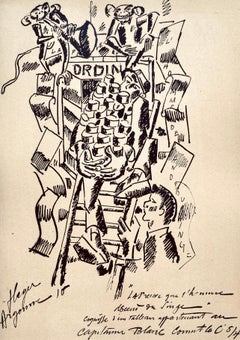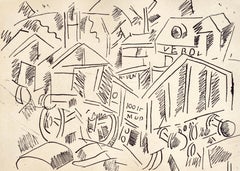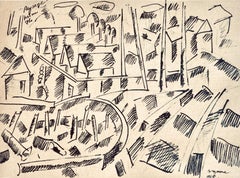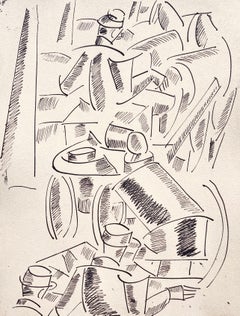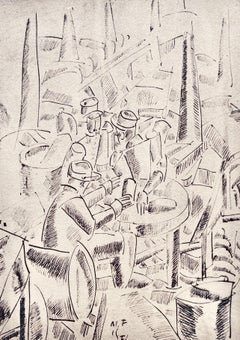Cubist Landscape Prints
Inspired by the nontraditional ways Postimpressionists like Paul Cézanne and Georges Seurat depicted the world, Pablo Picasso and Georges Braque pioneered an even more abstract style in which reality was fragmented into flat, geometric forms. Cubism majorly influenced 20th-century Western art as it radically broke with the adherence to composition and linear perspectives that dated back to the Renaissance. Its watershed moments are considered Picasso’s 1907 Les Demoiselles d’Avignon, in which nude figures are fractured into angular shapes, and Georges Braque’s 1908 painting show, which prompted a critic to describe his visual reductions as “cubes.”
Although Cubism was a revolutionary art movement for European culture, it was informed by African masks and other tribal art. Its artists, which included Fernand Léger, Alexander Archipenko, Marcel Duchamp, Juan Gris and Jean Metzinger, experimented with compressing space and playing with the tension between solid and void forms in their work. While their subjects were often conventional, such as still lifes, nudes and landscapes, they were distorted without any illusion of realism.
Cubist art evolved through different distinct phases. In Analytic Cubism, from 1908 to 1912, figures or objects were “analyzed” into pieces that were reassembled in paintings and sculptures, as if presenting the same subject matter from many perspectives at once. The palette was usually monochromatic and muted, giving attention to the overlapping planes. Synthetic Cubism, dating from 1912 to 1914, moved to brighter colors and a further flattening of images. This unmooring from formal ideas of art would shape numerous styles that followed, from Dada to Surrealism.
Find a collection of authentic Cubist paintings, prints and multiples, sculptures and more art on 1stDibs.
1950s Cubist Landscape Prints
Lithograph
1950s Cubist Landscape Prints
Lithograph
1950s Cubist Landscape Prints
Lithograph
1950s Cubist Landscape Prints
Lithograph
1950s Cubist Landscape Prints
Lithograph
1950s Cubist Landscape Prints
Lithograph
1950s Cubist Landscape Prints
Lithograph
1950s Cubist Landscape Prints
Lithograph
1950s Cubist Landscape Prints
Lithograph
1920s Cubist Landscape Prints
Lithograph
1960s Cubist Landscape Prints
Linocut
1960s Cubist Landscape Prints
Linocut
1960s Cubist Landscape Prints
Linocut
1960s Cubist Landscape Prints
Lithograph
1960s Cubist Landscape Prints
Lithograph
1960s Cubist Landscape Prints
Lithograph
1920s Cubist Landscape Prints
Engraving
1920s Cubist Landscape Prints
Lithograph
1920s Cubist Landscape Prints
Engraving
1920s Cubist Landscape Prints
Etching
